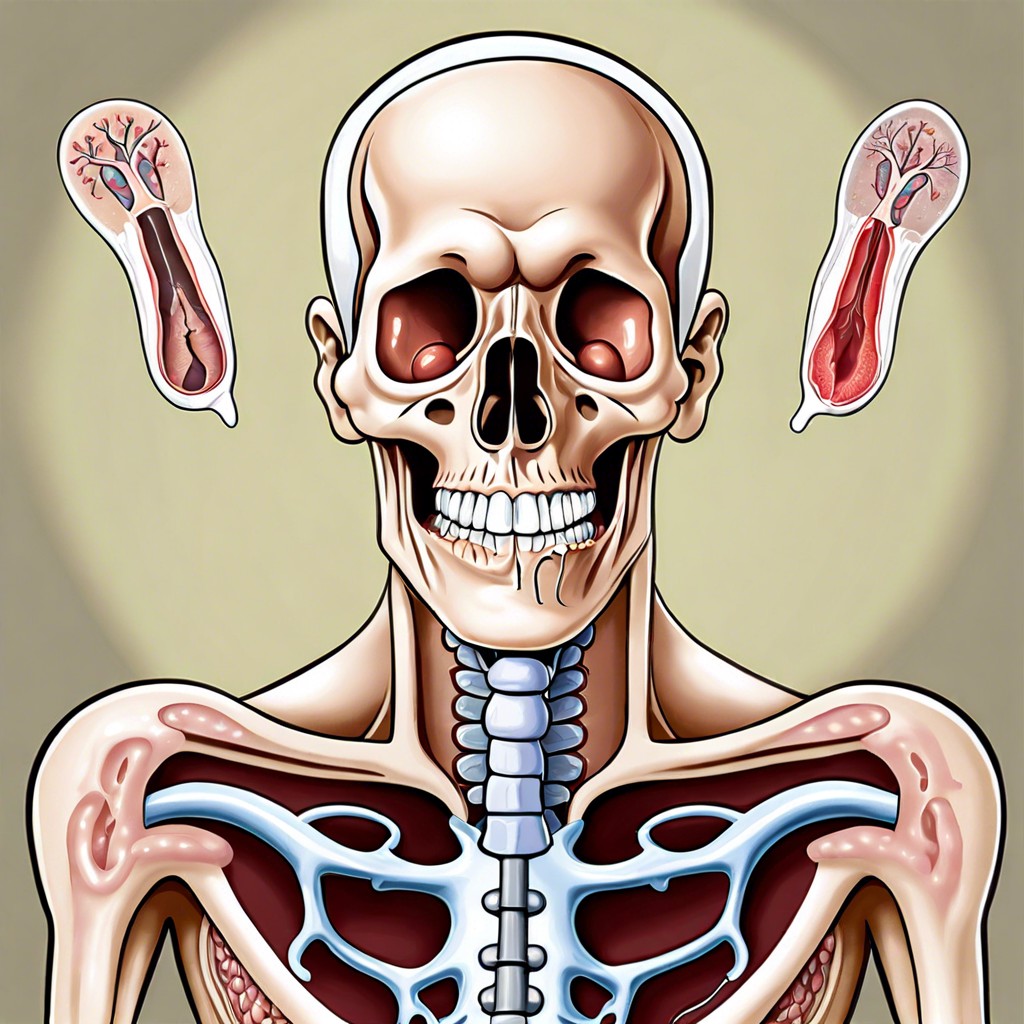If your PTH is high but calcium levels are normal, you might be dealing with secondary hyperparathyroidism, often due to vitamin D deficiency or chronic kidney disease, which we’ll clarify and explain.
Ever feel like your body is sending you mixed signals, like a GPS recalculating routes wildly? If your Parathyroid Hormone (PTH) levels are high but your calcium is playing it cool, you might be scratching your head. Don’t worry, you’re in the right place. We’ll decode the mystery behind this quirky combo, explore why it’s happening, and what it means for your health. Dive in, and let’s unlock the secrets together!
Key takeaways:
- Elevated PTH can mean secondary hyperparathyroidism, often from vitamin D or kidney issues.
- High PTH with normal calcium hints at vitamin D deficiency, kidney problems, or meds.
- Quirky symptoms from high PTH include fatigue, bone pain, kidney issues, and mood swings.
- Diagnosis involves blood tests, imaging, bone density scans, and urine tests.
- Treatments include addressing vitamin D levels, hydration, medication, monitoring, and dietary changes.
Understanding Parathyroid Hormone (PTH) and Calcium Levels

Alright, let’s dive into the fascinating hormonal world where PTH and calcium levels reign supreme. Essentially, PTH is like the conductor of an orchestra, directing calcium to where it’s most needed. It’s produced by the parathyroid glands, four tiny maestros located behind the thyroid gland.
Now for the fun part—calcium! This mineral is the rock star in our bodies, critical for strong bones, teeth, and even muscle functions. PTH ensures calcium levels in the blood are just right, not too high or too low, almost like Goldilocks’ porridge.
- Here’s how it works:
- When blood calcium drops, PTH jumps into action, pulling calcium from bones, absorbing more from food, and telling kidneys to hold onto it.
- Conversely, if calcium levels surge, PTH takes a chill pill, slowing down calcium absorption.
The relationship between PTH and calcium is a balancing act, like two partners in a well-rehearsed dance. When one missteps, the whole performance can wobble. But what if PTH is doing the tango while calcium stays put? Let’s explore this quirky scenario further.
Causes of Elevated PTH With Normal Calcium
One might think elevated PTH always points to high calcium levels, but life loves its curveballs!
First, vitamin D deficiency can stir the pot. When your vitamin D is running on empty, calcium absorption goes down, prompting the parathyroid glands to crank up the PTH to maintain balance.
Second, kidney issues can play a sneaky role. Kidneys struggling to do their job can disrupt calcium resorption, nudging PTH levels upward while calcium stays in check.
Third, certain medications like lithium or anticonvulsants might meddle, causing the parathyroid glands to release more PTH without altering those calcium numbers.
And let’s not forget secondary hyperparathyroidism. Conditions like chronic kidney disease can trigger this state, elevating PTH due to sustained low calcium conditions over time, yet it may present with normal calcium intermittently.
Potential Health Implications and Symptoms
When PTH is high but calcium levels remain normal, the body might still display a range of quirky symptoms. Imagine feeling fatigued more often than a cat in a sunbeam. That relentless tiredness might be your hint.
Bone health could take a sly hit too. You might never morph into the hunchback of Notre-Dame, but keep an eye (and a spine) out for possible bone pain or even mild fractures.
Kidneys might join the party as well. While you won’t necessarily morph into a human water hose, more frequent urination and occasional kidney stones could hint at this hormone imbalance.
Mood swings? You bet. Feeling moody and irritable isn’t just for teenagers; PTH can make adults feel that way too. Your friends might start calling you Dr. Jekyll and Mr. Hyde.
On top of that, some people notice muscle weakness creeping in, making even basic tasks feel like lifting a small mountain.
Hormones have a funny way of keeping us on our toes (or, sometimes, off them).
Diagnostic Tests and Evaluation
Alright, time to play detective! When you’re faced with high PTH but normal calcium, doctors don their Sherlock Holmes hats and dive into a series of diagnostic tests.
First up – the classic blood test. Besides PTH and calcium, they’ll check levels of phosphorus and magnesium. Surprise guests like vitamin D might also make an appearance on the checklist.
Second – imaging tests. Who doesn’t love a good picture? Doctors might use ultrasound or a sestamibi scan to peek at your parathyroid glands, in case they’re hiding something sneaky.
Third, there’s the bone density test. Yes, it’s like a photo shoot for your bones, but with X-rays. Just making sure those bones are as sturdy as they ought to be.
And don’t forget the urine test! Because why not? This isn’t just any trip to the restroom; it’s a 24-hour collection to track how much calcium you’re flushing away.
Each of these clues helps piece together the puzzle and pin down what’s really going on. Time for the microscope to step in – Sherlock would be proud!
Treatment and Management Strategies
Addressing elevated PTH with normal calcium involves a mix of lifestyle changes and, in some cases, medical interventions. Start with these strategies:
First, examine your vitamin D levels. Sometimes, a deficiency in the sunny vitamin can cause PTH to act up. Getting a dosage of vitamin D might just make your parathyroid behave.
Hydration is your new best friend. Drinking plenty of fluids helps your kidneys push calcium back into the blood where it belongs, potentially lowering PTH levels. Raise a glass to that!
Medication could be on the table. Your doctor might prescribe drugs that help regulate PTH levels or support kidney function.
Regular monitoring is crucial. Periodic blood tests ensure PTH and calcium levels stay in check, and you get to avoid nasty surprises.
Lastly, consider dietary tweaks. Balancing your intake of calcium and phosphorus-rich foods can keep things steady. So, that extra cheese on your pizza might actually be a good idea—just this once!
Therapeutic approaches, such as surgical intervention, are reserved for specific cases. But don’t stress—each plan is tailored to what your body needs.




